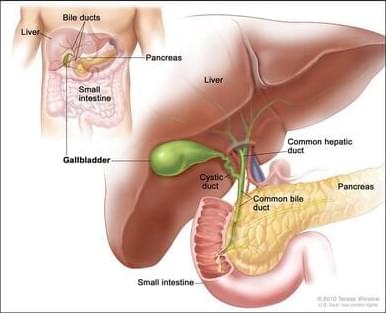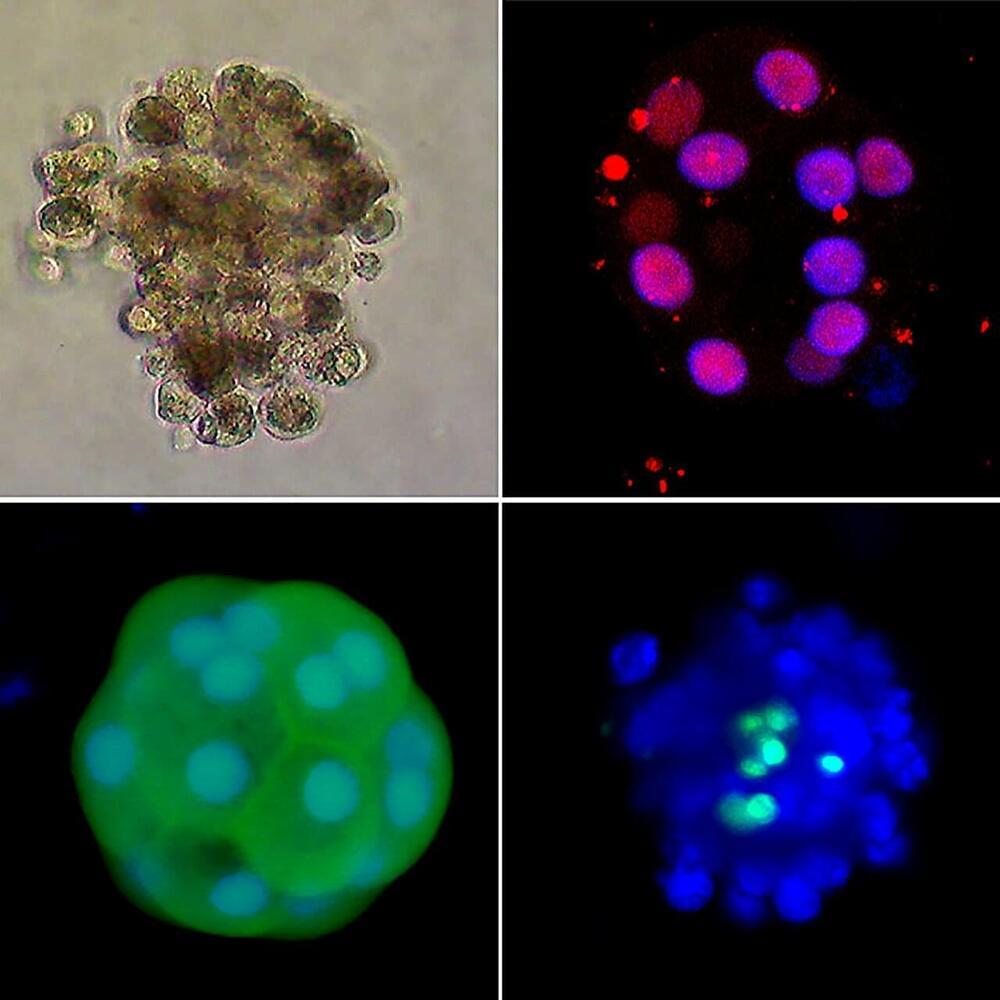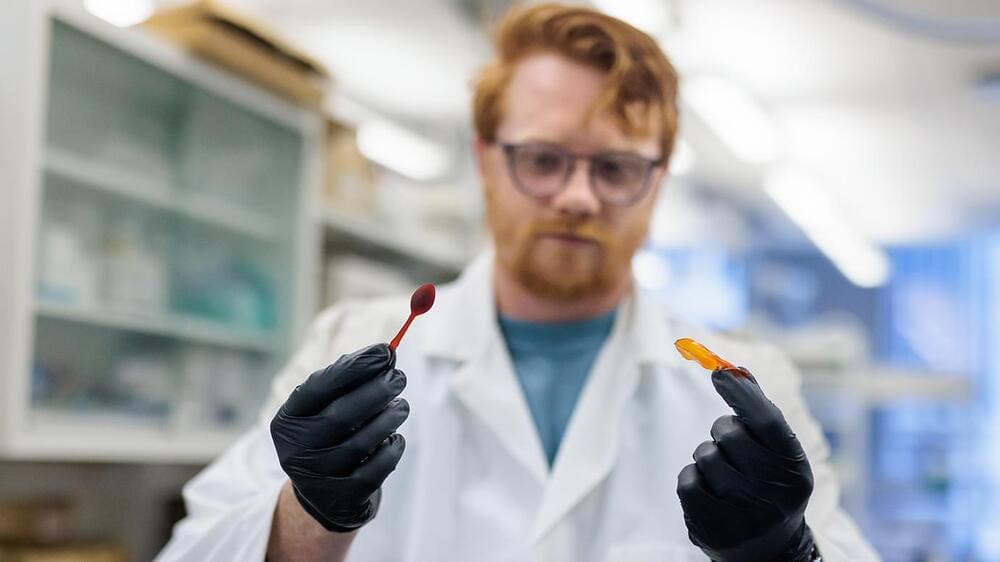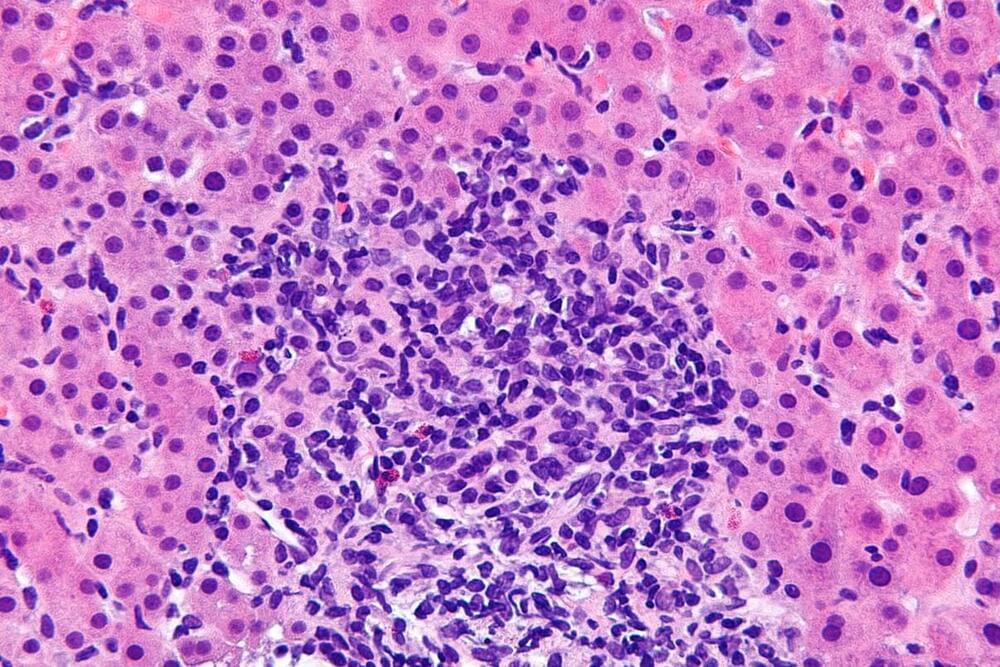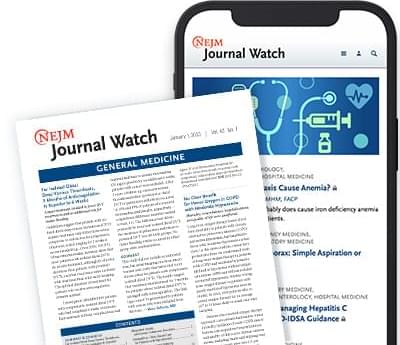Page 1396
Feb 6, 2024
Targeted Treatment for Rare GI Cancers May Extend Survival
Posted by Shubham Ghosh Roy in category: biotech/medical
In patients with biliary tract cancer with a BRAF mutation, treatment with dabrafenib plus trametinib shrank tumors, results from a phase 2 trial show.
Feb 6, 2024
New growth factor for the liver identified
Posted by Shubham Ghosh Roy in category: biotech/medical
A healthy liver is capable of completely regenerating itself. Researchers from Heinrich Heine University Düsseldorf (HHU), University Hospital Düsseldorf (UKD) and the German Diabetes Center (DDZ) have now identified the growth factor MYDGF (Myeloid-Derived Growth Factor), which is important for this regenerative capacity.
In cooperation with the Hannover Medical School and the University Medical Center Mainz, they also showed that higher levels of MYDGF can be detected in the blood of patients following partial removal of the liver.
In a study published in Nature Communications, they also report that this growth factor stimulates the proliferation of human hepatocytes in a tissue culture.
Feb 6, 2024
Brush biopsy enables early detection of oral cancer without surgery
Posted by Shubham Ghosh Roy in categories: biotech/medical, genetics
A new test invented by University of Illinois Chicago researchers allows dentists to screen for the most common form of oral cancer with a simple and familiar tool: the brush.
The diagnostic kit, created and patented by Guy Adami and Dr. Joel Schwartz of the UIC College of Dentistry, uses a small brush to collect cells from potentially cancerous lesions inside the mouth. The sample is then analyzed for genetic signals of oral squamous cell carcinoma, the ninth most prevalent cancer globally.
This new screening method, which is currently seeking commercialization partnerships, improves upon the current diagnostic standard of surgical biopsies-an extra referral step that risks losing patients who sometimes don’t return until the cancer progresses to more advanced, hard-to-treat stages.
Feb 6, 2024
New findings from JWST: How black holes switched from creating to quenching stars
Posted by Shubham Ghosh Roy in categories: cosmology, physics
Astronomers have long sought to understand the early universe, and thanks to the James Webb Space Telescope (JWST), a critical piece of the puzzle has emerged. The telescope’s infrared detecting “eyes” have spotted an array of small, red dots, identified as some of the earliest galaxies formed in the universe.
This surprising discovery is not just a visual marvel, it’s a clue that could unlock the secrets of how galaxies and their enigmatic black holes began their cosmic journey.
“The astonishing discovery from James Webb is that not only does the universe have these very compact and infrared bright objects, but they’re probably regions where huge black holes already exist,” explains JILA Fellow and University of Colorado Boulder astrophysics professor Mitch Begelman. “That was thought to be impossible.”
Feb 6, 2024
Certain indoor air pollutants can be absorbed through the skin — here’s what you need to know
Posted by Shubham Ghosh Roy in category: materials
These pollutants can originate from many common household products – including vinyl flooring, plastic toys, cleaning products and furniture.
Feb 6, 2024
New research supports therapeutic potential of senolytics in DME
Posted by Shubham Ghosh Roy in category: biotech/medical
Publication in Nature Medicine details long-lasting, disease-modifying intervention in vision loss from diabetic macular edema.
Feb 6, 2024
UChicago scientists develop a plastic that can be re-formed as needed
Posted by Shubham Ghosh Roy in category: materials
Feb 6, 2024
This ‘guardian’ molecule may make women more vulnerable to autoimmune diseases
Posted by Shubham Ghosh Roy in categories: bioengineering, biotech/medical, genetics, sex
Women are more likely than men to have conditions such as lupus, rheumatoid arthritis, and autoimmune hepatitis (depicted above in a cellular micrograph), in which their immune response attacks healthy, functioning parts of their body. Yet the reason behind this sex-based imbalance has long eluded scientists. Now, a study published last week in proposes that a molecule associated with the X chromosome may be partly to blame. Researchers noticed that many of the proteins commonly targeted by the immune system in people with autoimmune diseases had something in common: They help a molecule called Xist carry out its function. Xist molecules act a bit like quality control inspectors for women’s extra X chromosomes, preventing them from producing a toxic amount of proteins. The scientists suspect that when immune cells encounter large bunches of these Xist-related proteins—for instance, when a dead cell spills them into the bloodstream—they may react by making antibodies to attack them throughout the body. To test the idea, the team studied genetically engineered mice in which both males and females produced Xist. Like their female counterparts, these males were also at an increased risk of developing severe cases of lupus. The researchers also found that people with autoimmune disorders had more antibodies for Xist-related proteins in their blood. Still, Xist molecules may not be the only factor at play: Experts note that some people produce these Xist-related antibodies without developing autoimmune disorders, reports.
Feb 6, 2024
Peripheral Sensory Abnormalities in ALS
Posted by Shubham Ghosh Roy in categories: biotech/medical, neuroscience
A new study adds to the growing literature showing that motor neurons are not the only sites affected in amyotrophic lateral sclerosis, writes Dr. Leana Doherty.
Amyotrophic lateral sclerosis (ALS) is a progressive neurodegenerative disease primarily affecting motor neurons. However, nonmotor manifestations, including sensory, cognitive, and autonomic impairments, increasingly have been reported. In the current study, investigators examined cutaneous innervation and its correlation with disease severity in patients with ALS using the Small Fiber Neuropathy Symptoms Inventory Questionnaire, nerve conduction studies, and distal leg, thigh, and fingertip (glabrous skin) punch biopsies. Patients with alternate diagnoses including endocrinopathies, autoimmune disorders, and vitamin deficiencies were excluded.
Among 149 participants with ALS (mean age, 63; median disease duration, 14.3 months), 35% experienced large-fiber or small-fiber sensory symptoms or both. The frequency of small-fiber symptoms was higher in patients with more severe disease based on King’s staging; scores increase on the scale from 1 to 5 with increasing regions involved. Nearly one quarter of patients had one or more sensory nerve action potential abnormalities. The density of Meissner corpuscles (MC) was reduced in most ALS patients (53÷100), and intraepidermal nerve fiber (IENF) density was reduced at all sites (5th percentile: at the leg, 58%; thigh, 78%) compared with healthy controls. While MC density decreased with increasing King’s stage, IENF density increased. Increasing IENF density on repeat thigh biopsies at 6 and 12 months was associated with shorter survival. The researchers postulated that this may reflect an upregulation of reparative pathways paralleling disease aggressiveness.
Continue reading “Peripheral Sensory Abnormalities in ALS” »

